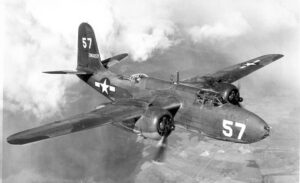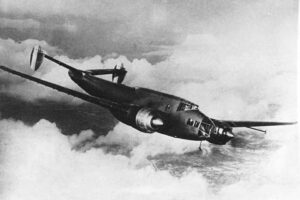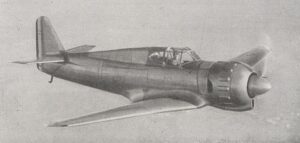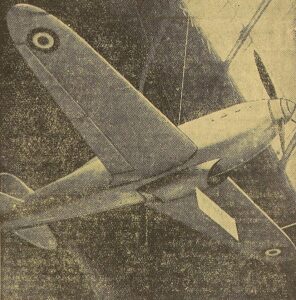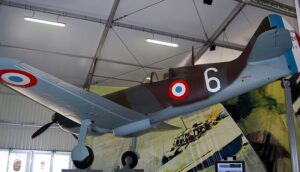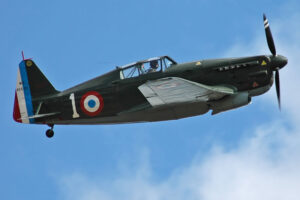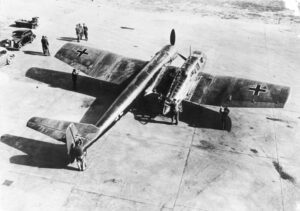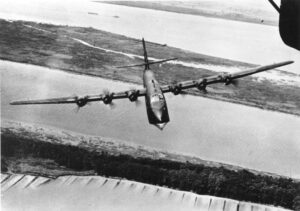Time Period: World War II
Country of Origin: United States
Type: Bomber Aircraft (Heavy)
Manufacturer: Consolidated Aircraft
Consolidated B-24 Liberator Aircraft Overview
The Consolidated B-24 Liberator was a versatile and widely-used heavy bomber employed by the Allied air forces during World War II. Designed and produced by Consolidated Aircraft Corporation, the B-24 played a crucial role in strategic bombing campaigns against Axis targets, particularly in Europe and the Pacific.
With its distinctive twin-tail design and high aspect-ratio wings, the B-24 was known for its long range and high payload capacity, making it well-suited for long-range bombing missions deep into enemy territory. Powered by four radial engines, the B-24 could carry a substantial bomb load over considerable distances, allowing it to strike targets with precision and accuracy.
The B-24 was utilized in a variety of roles during the war, including strategic bombing, anti-submarine patrols, reconnaissance, and transport missions. Its ability to carry a diverse array of armaments and equipment made it adaptable to a wide range of operational requirements, earning it the nickname “The Liberator.”
One of the B-24’s most notable contributions was its role in the strategic bombing campaign against Nazi Germany. Alongside the Boeing B-17 Flying Fortress, the B-24 conducted countless bombing raids over industrial targets, transportation networks, and military installations, helping to cripple Germany’s war effort and pave the way for Allied victory in Europe.
In addition to its role in Europe, the B-24 also saw extensive service in the Pacific theater, where it was used to attack Japanese shipping, airfields, and industrial centers. Its long range and endurance made it well-suited for the vast expanses of the Pacific, where it played a vital role in the island-hopping campaign and the eventual defeat of Japan.
Despite its impressive performance and contribution to the Allied war effort, the B-24 was not without its challenges. Its complex systems and controls required skilled pilots and crew members to operate effectively, and it suffered from a higher accident rate compared to its counterpart, the B-17.
Overall, the Consolidated B-24 Liberator was a workhorse of the Allied air forces during World War II, serving with distinction in theaters around the world. Its versatility, range, and payload capacity made it a key asset in strategic bombing campaigns and a symbol of Allied air power during the war.
Consolidated B-24 (B-24J) Specifications
- Crew: 11 (pilot, co-pilot, navigator, bombardier, radio operator, nose turret, top turret, 2 waist gunners, ball turret, tail gunner)
- Length: 67 ft 2 in (20.47 m)
- Wingspan: 110 ft (34 m)
- Height: 17 ft 7.5 in (5.372 m)
- Wing area: 1,048 sq ft (97.4 m2)
- Aspect ratio: 11.55
- Zero-lift drag coefficient: CD0.0406
- Frontal area: 42.54 sq ft (3.952 m2)
- Airfoil: root: Davis (22%); tip: Davis (9.3%)
- Empty weight: 36,500 lb (16,556 kg)
- Gross weight: 55,000 lb (24,948 kg)
- Max takeoff weight: 65,000 lb (29,484 kg) plus
- Fuel capacity: 2,344 US gal (1,952 imp gal; 8,870 L) normal capacity; 3,614 US gal (3,009 imp gal; 13,680 L) with long-range tanks in the bomb bay; Oil capacity 131.6 US gal (109.6 imp gal; 498 L) in four self-sealing nacelle hopper tanks
- Powerplant: 4 × Pratt & Whitney R-1830-35 Twin Wasp, R-1830-41 or R-1830-65 14-cylinder two-row air-cooled turbo-supercharged radial piston engines, 1,200 hp (890 kW) each
- Propellers: 3-bladed Hamilton Standard, 11 ft 7 in (3.53 m) diameter constant-speed fully-feathering propellers.
Consolidated B-24 (B-24J) Performance
- Maximum speed: 297 mph (478 km/h, 258 kn) at 25,000 ft (7,600 m)
- Cruise speed: 215 mph (346 km/h, 187 kn)
- Stall speed: 95 mph (153 km/h, 83 kn)
- Range: 1,540 mi (2,480 km, 1,340 nmi) at 237 mph (206 kn; 381 km/h) and 25,000 ft (7,600 m) with normal fuel and maximum internal bomb load
- Ferry range: 3,700 mi (6,000 km, 3,200 nmi)
- Service ceiling: 28,000 ft (8,500 m)
- Rate of climb: 1,025 ft/min (5.21 m/s)
- Time to altitude: 20,000 ft (6,100 m) in 25 minutes
- Lift-to-drag: 12.9
- Wing loading: 52.5 lb/sq ft (256 kg/m2)
- Power/mass: 0.0873 hp/lb (0.1435 kW/kg)
Consolidated B-24 (B-24J) Armament
- Guns: 10 × .50 caliber (12.7 mm) M2 Browning machine guns in 4 turrets and two waist positions
- Bombs:
- Short range (400 mi [640 km]): 8,000 pounds (3,600 kg)
- Long range (800 mi [1,300 km]): 5,000 pounds (2,300 kg)
- Very long range (1,200 mi [1,900 km]): 2,700 pounds (1,200 kg)



